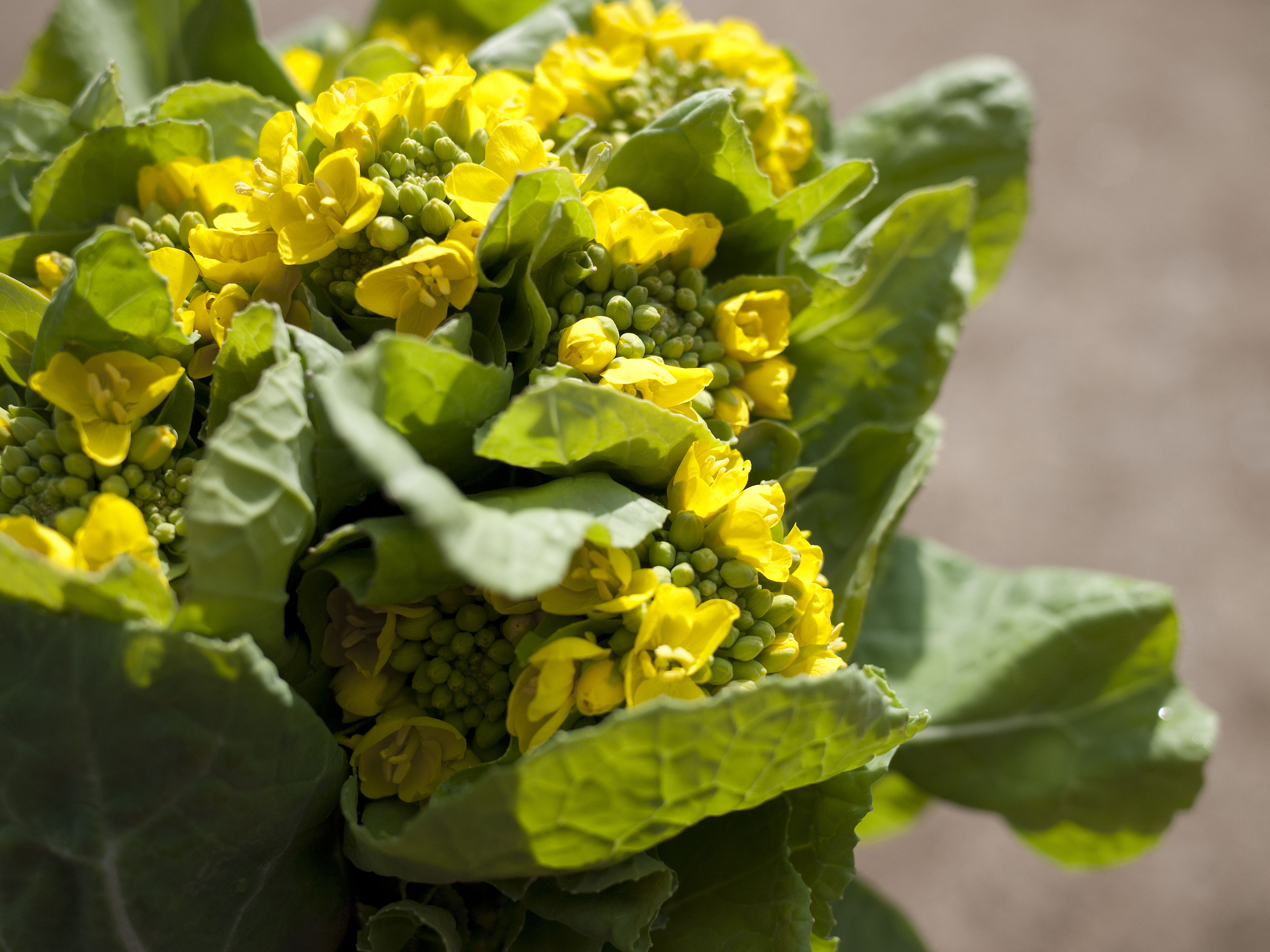After an unusually cold winter, the sight of spring produce is particularly welcome, especially the bright yellow-green of nanohana. While plain-green nanohana is available almost year-round these days, it's only in early spring when you see the ones picked from open fields that are covered in tiny just-emerging flower buds.
Nanohana is one of the oldest vegetables cultivated in Asia, including Japan. It's closely related to the rapeseed or canola plant in Europe and the West, and also to broccoli, since all of these are members of the brassica family. While in the West rapeseed is usually only grown for its seeds, from which oil is extracted, in Japan the plant is used at various stages of growth. Each stage is given a different name, too: The young spring shoots are called nanohana, which literally means "flower of vegetable," and the mature plant that's used for oil as in the West is called aburana, which means "oil plant." Rapeseed oil is called natane abura or "vegetable-seed oil" and has been used at least since the Edo Period (1603 to 1867).
While they are not as widely celebrated as sakura cherry trees, fields of yellow flowering nanohana are also a much-loved harbinger of spring, coming in between the ume (plum) blossoms that open in mid-February around the Tokyo area and the cherry blossoms that bloom in April. The word nanohana is a recognized seasonal word in haiku, signifying early spring. There's also a well-known children's song called "Oborozukiyo" ("Hazy Moonlit Spring Night") that poetically describes a misty nanohana field in the early evening with a gentle spring breeze blowing over it.



















With your current subscription plan you can comment on stories. However, before writing your first comment, please create a display name in the Profile section of your subscriber account page.